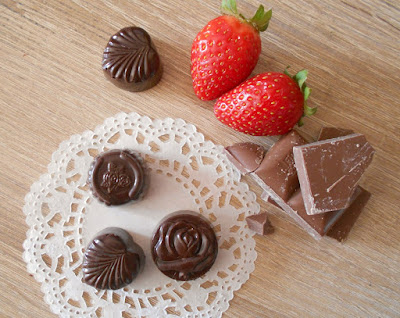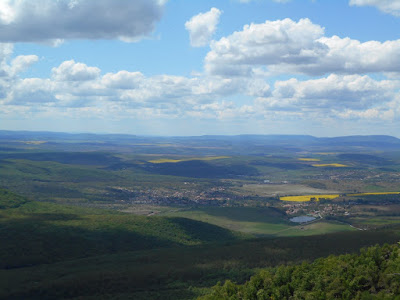Hittétek volna, hogy a banánnak gazdag mitológiája van?! Belegondolva persze annyira nem is furcsa, hiszen még nálunk is, eredeti termőhelyétől messze az egyik legnépszerűbb gyümölcs. Ennek megfelelően rengeteg történetet, mítoszt és a banánfával kapcsolatos mitikus lényt találtam, amik közül most csak egyet, a legszebbet emelem ki.
Nang Tani a thai folklór egyik kedvelt alakja: egy női szellem, aki a banánfákban él. Afféle driád tehát, a növényt őrző tündér, aki a banánfa körül szokott megjelenni szépséges, zöldes bőrű leány képében. Általában hagyományos thai népviseletet visel, ébenszín, dús haja kibontva omlik a hátára, ajkai vörösek. Főleg teliholdas éjszakákon kísért.
A Nang Tani által lakott fákat tilos kivágni, viszont édességeket és füstölőket visznek neki áldozatként. Sokatmondó egyébként, hogy a tündér csak egy bizonyos fajta banánfában él, amelynek gyümölcse nem ehető. A thai szájhagyomány úgy tartja, hogy jóindulatú szellem, azonban elbánik azokkal a férfiakkal, akik bántalmazzák a nőket.
Én ezt a csokit sokkal prózaibb körülmények között, egy kirándulás apropóján gyártottam, bár egy ilyen varázslatos tündér után illőbb lenne valamilyen történetet keríteni arról, hogyan ajándékozta nekem Nang Tani az ehető banánok legfinomabbikát :D Viszont maga a túra testet-lelket felüdítő volt, és az időről időre elénk táruló táj látványának csodálása közben a csoki jelentette a kulináris aláfestést. Eredeti tervem az volt, hogy egy igazi klasszikus "kinder csokit" gyártsak, aztán hogy, hogy nem, hozzáadódott a banán, majd a müzli is. Szerettem volna, ha a müzlidarabkák ropogóssága ellensúlyozza az édes krémet, de sajnos pont ez a fajta müzli elég gyorsan megszívja magát. Szóval ha valaki elkészíti ezt a csokit, annak ajánlom a kísérletezést ellenállóbb fajtákkal :D Ennek ellenére persze így is meglehetősen jó volt, hogy a banános töltelék közepette felbukkantak a tömény csokis darabkák.
Hozzávalók:
80+40 gr fehércsoki
50 gr banán
20 ml tejszín
1-2 marék csokis müzli
200 gr étcsoki
cukorgyöngyök
Elkészítés:
A banánt egy kis tányérban villával szétnyomkodom, hozzákeverem a tejszínt. Vízgőz fölött felolvasztok 80 gr fehércsokit, ezt is a banánhoz keverem. Ezután mozsárban durva darabokra töröm a müzlit, és belekeverem a krémbe.
A csokicsészék elkészítéséhez temperálom az étcsokit (valójában én ét- és tejcsokiból is készítettem pár csészét, de kóstolás után megállapítottam, hogy az étcsokis verzió finomabb, úgyhogy azt ajánlom). Kiöntöm a formát, majd miután kirázogattam a felesleget, és megszikkadt a csoki, beteszem a hűtőbe. Amikor elkészültek a csészék, kioperálom őket a formából, majdnem színültig töltöm a banános krémmel. Temperálok egy adag fehércsokit, és fél-fél kiskanállal öntök a csészék tetejére. Elterítem, majd cukorgyöngyöket szórok rá díszítésként.
Would you believe how rich mythology the banana has?! Thinking about it, this is not so weird, after all the banana is one of the most popular fruits even here, far away from its place of cultivation. Accordingly, I found several stories, myths and mythological creatures linked to the banana tree; here I will write about one of them, the most beautiful.
Nang Tani is one of the most popular figures of Thai folklore: a female spirit who lives in banana trees. She is a kind of dryad, a fairy guarding the tree, who appears around it as a beautiful girl with greenish complexion. Usually she wears a traditional Thai costume; her abundant, black hair flows down on her back untied; her lips are red. She haunts especially on full moon nights.
Trees inhabited by the Nang Tani are forbidden to cut; but offerings are made in the form of sweets and incense sticks. It is telling that the fairy lives only in one certain type of banana tree, whose fruit is not edible. According to Thai oral tradition, she is a benevolent spirit, but will harm men who have wronged women.
This chocolate was made under less poetic circumstances, only for a trip; however, after such a magical fairy, it would be more fitting to create a story about how Nang Tani gave me the tastiest of all bananas :D Then again, the trip was refreshing both mentally and physically; and while we admired the view, the chocolate served as a culinary soundtrack. My original plan was to make a classic "kinder chocolate", but then somehow the banana came into picture and also the cereal. I wanted the crunchy cereal morsels to act as counterpoint with the sweet cream, but unfortunately this kind of cereal soaks through quickly. So if you want to try this chocolate, I suggest to use a more resistant type :D Despite that, it was still quite good that dense chocolate pieces popped up in the middle of the banana filling.
Ingredients:
80+40 gr white chocolate
50 gr banana
20 ml cream
1-2 handfuls of chocolate cereal
200 gr dark chocolate
candy pearls
Recipe:
I crush the banana in a small plate and I mix it with the cream. Above steam, I melt 80 gr white chocolate, I combine it with the banana. Then I crush the cereal in a mortar and put it in the cream.
For the chocolate cups, I temper the dark chocolate (I tried both milk and dark chocolate cups, but after tasting them, I decided that the dark chocolate version is more tasty so I recommend that one). I prepare the shells, get rid of the excess chocolate and when the chocolate sets, I put the mould in the fridge. When the cups are ready, I take them out of the mould and fill them almost to the top with the banana cream. I temper some white chocolate and pour half a spoon of it on each of the cups. I spread it to seal the bonbons, and sprinkle it with candy pearls.



















